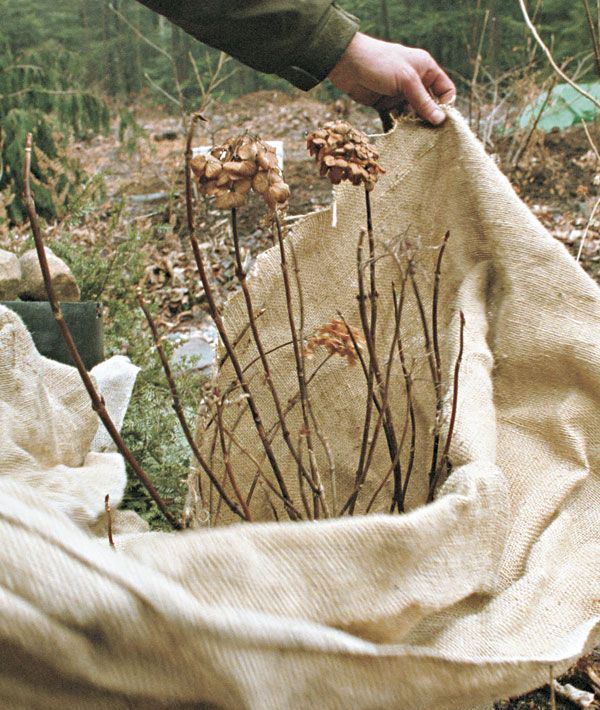- October 10, 2024
- Posted by: wellcoindustries
- Categories: Burlap, Erosion Control
As the colder months approach, it’s essential to prepare your garden for winter’s harsh conditions. One effective way to protect your outdoor plants from freezing temperatures, drying winds, and heavy snow is by burlapping them. But when should outdoor plants be burlapped for the winter? Knowing the right timing can make all the difference in preserving the health and beauty of your garden through the winter season. In this guide, we’ll explore the importance of burlapping, the best time to do it, and how to ensure your plants are protected until spring.

Why Burlapping Outdoor Plants is Essential for Winter
Winter can be brutal for many outdoor plants, especially in regions that experience freezing temperatures, heavy snow, or strong winds. These conditions can cause desiccation, frostbite, or even death for sensitive plants. Burlapping, or wrapping plants with burlap fabric, is a tried-and-true method for protecting them from the worst of winter weather.
Burlap acts as a barrier against cold winds, helping to retain moisture and protect plants from freezing. It is breathable, allowing air to circulate, unlike plastic or other synthetic covers, which can trap moisture and lead to rot or mold. The types of plants that benefit most from being burlapped include evergreens, shrubs with tender branches, and newly planted trees. In regions with particularly cold winters, this extra layer of protection is crucial for plant survival.
Signs It’s Time to Burlap Outdoor Plants
Timing is key when it comes to burlapping outdoor plants. Wrapping them too early can trap heat and moisture, which can encourage fungal growth or stress the plants. Wrapping too late, on the other hand, leaves plants vulnerable to the first harsh frost.
So when should outdoor plants be burlapped for the winter? The best time to burlap is after the first hard frost, when temperatures drop consistently below freezing. This ensures that the plants have already entered dormancy, reducing the risk of damage from trapped heat. Generally, early to mid-fall is when you should start preparing, depending on your region.
- Key indicators: You’ll want to burlap when nighttime temperatures drop below 32°F (0°C) for several consecutive nights.
- Regional factors: In colder climates, such as zones 3-5, you may need to burlap sooner, while in milder climates, you might be able to wait until late fall or early winter.
- Type of plant: Pay special attention to young trees, evergreens, and delicate shrubs, as these are most susceptible to winter damage.
How to Burlap Outdoor Plants: A Step-by-Step Guide
Burlapping your outdoor plants may seem simple, but there are a few steps to follow to ensure you’re doing it right. Here’s how to properly protect your plants with burlap:
- Gather materials: You’ll need burlap, stakes, and ties (twine, zip ties, or something similar).
- Position stakes: For larger shrubs or trees, place stakes around the plant to form a barrier. The stakes should be about 6-12 inches away from the outer edge of the plant.
- Wrap the burlap: Drape the burlap over the stakes, ensuring it covers the plant entirely. The burlap should not touch the plant directly to avoid damage.
- Secure the burlap: Use ties or twine to secure the burlap at the top and bottom, ensuring that the cover is snug but not too tight. This allows for proper airflow while still offering protection from the elements.
- Monitor throughout winter: Check on your plants periodically, especially after snowstorms or high winds, to make sure the burlap is still intact.
This method provides ample protection while allowing your plants to breathe and stay healthy during the winter months.
Common Mistakes to Avoid When Burlapping Outdoor Plants
While burlapping is an effective method for protecting plants, there are a few common mistakes gardeners make that can do more harm than good. Avoid these errors to ensure your plants stay healthy throughout the winter:
- Wrapping too early: If you burlap your plants before they’ve gone dormant, the excess heat and moisture can lead to mold, mildew, or stress.
- Wrapping too tightly: Plants need room to breathe, so avoid over-wrapping them. Tight burlapping can damage branches and restrict airflow, leading to rot.
- Leaving burlap on too long: Once the weather starts to warm up, remove the burlap to prevent plants from overheating. Burlapping should be removed in early spring, once the threat of frost has passed.
- Using non-breathable materials: Never use plastic or synthetic materials as a substitute for burlap. These materials trap moisture and cause damage to plants.
By avoiding these common pitfalls, you’ll ensure that your plants are properly protected throughout the winter without causing unnecessary harm.
Conclusion
Burlapping is a simple but essential task to help your garden weather the winter months. By knowing when outdoor plants should be burlapped for the winter and following the right steps to protect them, you can give your plants the best chance at surviving the cold season and thriving in the spring. Timing, proper techniques, and attention to detail are key to ensuring your plants stay healthy throughout the winter.
Now is the time to assess your garden, gather your supplies, and start planning your winter protection. A well-prepared garden will reward you with healthy, beautiful plants come springtime. Don’t wait—start burlapping before the first frost hits!
